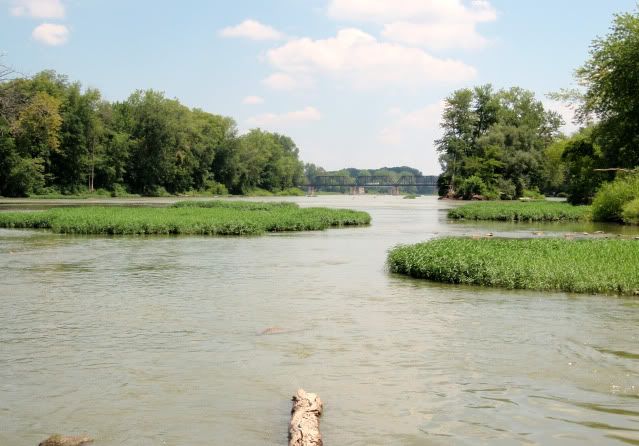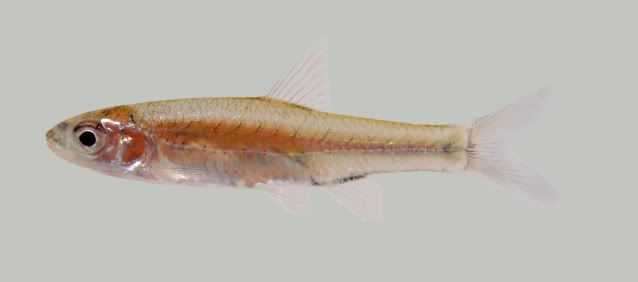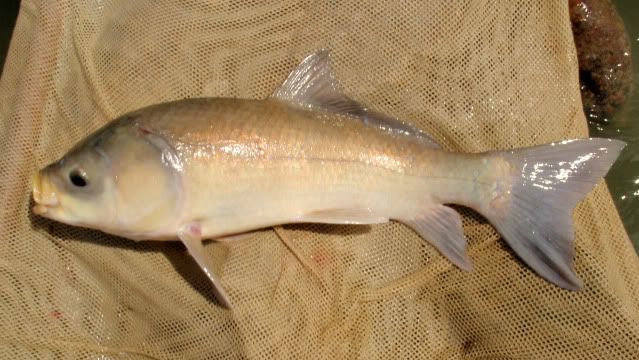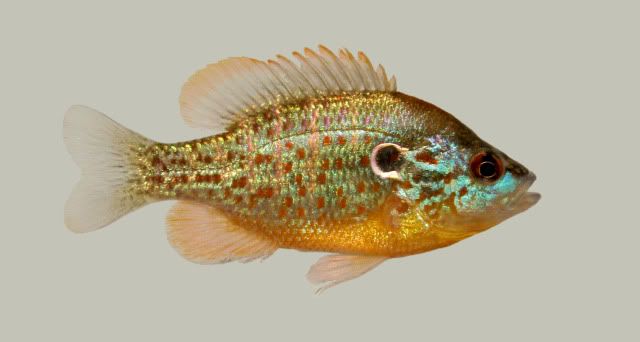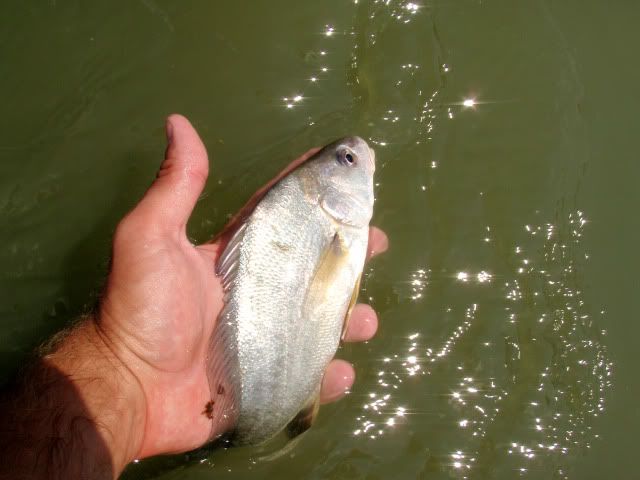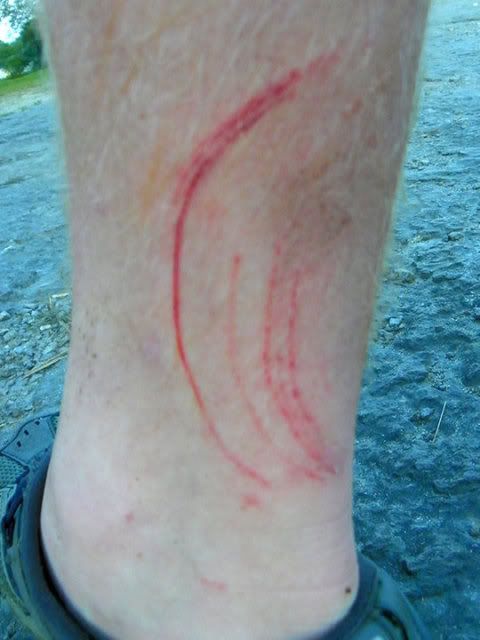I recently made a new acrylic photo container and got some new photo technique ideas (thanks Uland and Lance!) that I just had to try out. I picked the nicest day of the week and headed out to one of my favorite places for seeing fish typical of large river systems (at least large river systems in the Great Lakes drainage). I went to the Maumee River in northwestern Ohio. This large river is a tributary to the western basin of Lake Erie. Many species of fish make spawning runs out of Lake Erie, and wind up in this river. During this time of year, however, it's mostly river residents. I decided to sample (via 6'x4' minnow seine) in two areas near the most downstream dam on the river. First I went 100 meters upstream of the dam...
Date: 7-27-10
Location: Maumee River in Grand Rapids, OH. 100 meters upstream of the dam.

Water level: 1300 cfs - and slowly rising. Normal discharge is 900 cfs. The area I sampled was less than 1m deep.
Water temperature: likely in the upper 70's*F
Water quality: Recent rains made the Maumee more turbid than usual. Pools upstream of the dam were heavily silted.
Substrate: Heavily silted limestone cobble and bedrock.
Vegetation: The turbid waters, silted substrate, and bedrock of the area don't provide for much in-stream diversity. Some water willow emerged near the shoreline.
Collected:
Longnose Gar (Lepisosteus osseus) - didn't catch any, but saw some very large adults coming up for gulps of air from time to time. I was glad that some of them were on the opposite side of the water willow from me. One looked like it could have been approaching 4 feet in length!
Gizzard Shad (Dorosoma cepedianum)
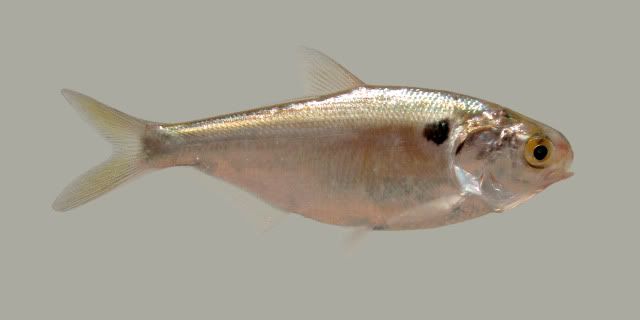
- saw large schools dimpling the surface, occasionally breaking the surface, likely eluding Longnose Gar.
Bluntnose Minnow (Pimephales notatus)
Redfin Shiner (Lythrurus umbratilis)
Golden Shiner (Notemigonus crysoleucas)
Emerald Shiner (Notropis atherinoides)
Common Carp (Cyprinus carpio) - a few large ones were foraging among the willows.
Tadpole Madtom (Noturus gyrinus)
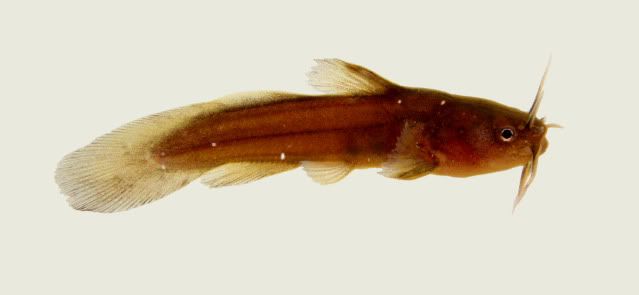
- caught 3 small fish buried in the water willows. After looking at this fish closer, he appeared to be parasitized by small grubs.
Blackstripe Topminnow (Fundulus notatus)
Bluegill (Lepomis macrochirus)
Orangespotted Sunfish (Lepomis humilis)
Freshwater Drum (Aplodinotus grunniens) - caught one small young of year here.
After a short while there, I decided to see what was swimming downstream of the dam...


